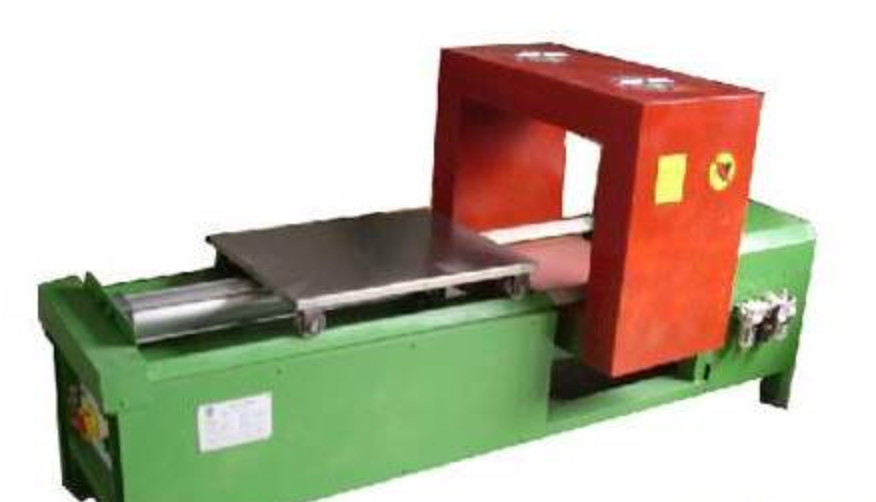Principles and methods of demagnetization
Demagnetization, also known as magnetic cleaning, demagnetization, etc., refers to the process of magnets returning to a magnetic neutral state, and can also be called magnetic neutralization.
In industrial processing, there are three methods of demagnetization:
1. Static demagnetization
Add a magnetic field opposite to the original magnetization direction of the magnet. The strength of this diamagnetic field should ensure that when it is removed, the magnetic induction intensity of the magnetic body will become zero. The resulting magnetic neutral state is called the static magnetic neutral state.
In the hysteresis loop, the red line segment in the second quadrant represents the demagnetization curve, that is, when a magnet is applied with a magnetic field opposite to the magnetizing direction, its magnetic induction intensity decreases as the reverse magnetization field intensity increases. When the magnetization field intensity reaches -Hc, the magnetic induction intensity of the magnet drops to 0, and then the magnet no longer has magnetism.
The hysteresis loop is measured at room temperature, and the demagnetization curve of the magnet is not the same at different working temperatures. Therefore, the strength of the reverse magnetic field applied for demagnetization under different temperature conditions is different.
2. Dynamic demagnetization
A sufficiently strong alternating magnetic field is applied to the magnetic body, and then the amplitude of the alternating magnetic field is gradually reduced to zero. The resulting magnetic neutral state is called dynamic magnetic neutral state.
The principle of this method is to place the workpiece in an alternating magnetic field and use the hysteresis loop to demagnetize. As the amplitude of the alternating magnetic field gradually decays, the trajectory of the hysteresis loop becomes smaller and smaller. When the magnetic field gradually decays to zero, the residual magnetism in the workpiece will be close to zero. It can be seen that the direction and size of the current and the magnetic field change during demagnetization, and commutation and attenuation must be carried out at the same time.
(1) Alternating current demagnetization
The workpiece that has been electromagnetized by alternating current is demagnetized by alternating current, and the pass method or the attenuation method can be used.

A Passing method
For batch demagnetization of small and medium-sized workpieces, it is best to put the workpieces on a demagnetizer equipped with rails and carriages for demagnetization. When demagnetizing, place the workpieces on the carriages 30cm in front of the coil. When the coils are energized, move the workpieces along The track slowly passes through the coil and is at least 1m away from the coil and is powered off. For heavy or large workpieces that cannot be demagnetized on the demagnetizer, you can also put the coil on the workpiece, slowly pass the coil and stay away from the workpiece when power is applied, and cut off the power at least 1m away.
B attenuation method
Because the direction of the alternating current is constantly reversed, an automatic attenuation demagnetizer or a voltage regulator can be used to gradually reduce the current to zero for demagnetization. Place the workpiece in the coil, clamp it between the two magnetized chucks of the flaw detector, or use a support rod After the contact contacts the workpiece, the current is reduced to zero for demagnetization.
The picture below shows the demagnetization effect of a certain demagnetizer found on the Internet. It can be seen that the magnet still has a certain amount of residual magnetism after demagnetization. The price of the demagnetizer is mainly related to the capacity of the energy storage capacitor and the charging voltage (energy of the demagnetizer). When purchasing the demagnetizer, you should mainly consider factors such as the brand of the demagnetization product or the intrinsic coercivity and the size of the demagnetization sample.
(2) DC demagnetization
By continuously changing the direction of the direct current, at the same time the current through the workpiece is reduced to zero for demagnetization. The waveform of the DC demagnetization current is shown in the figure below. In the figure, T1 is the current on time interval, and T2 is the current off time interval. It is necessary to ensure that the current reverses when the power is off. The decay times of the current should be as many as possible (generally more than 30 times are required), and the current amplitude of each decay should be as small as possible. If the decay amplitude is too large, the purpose of demagnetization will not be achieved.
3. Thermally induced demagnetization
It is a method of heating a magnetic body above the Curie temperature and then cooling and demagnetizing it without the action of an external magnetic field. The sintered neodymium iron boron can be baked at a high temperature above 350℃ for 30 minutes to 1 hour by means of thermal demagnetization.
In the working temperature, the magnetic force of the magnet will decrease when the temperature rises, but most of the magnetic force will recover after cooling down. If the temperature reaches the Curie temperature, the molecules inside the magnet move violently and demagnetize, which is irreversible.
No matter which of the above three methods is used to demagnetize the magnet, it will permanently change the internal structure of the magnet. After demagnetization, magnetizing the magnet will not restore the magnetic performance to the previous level.
